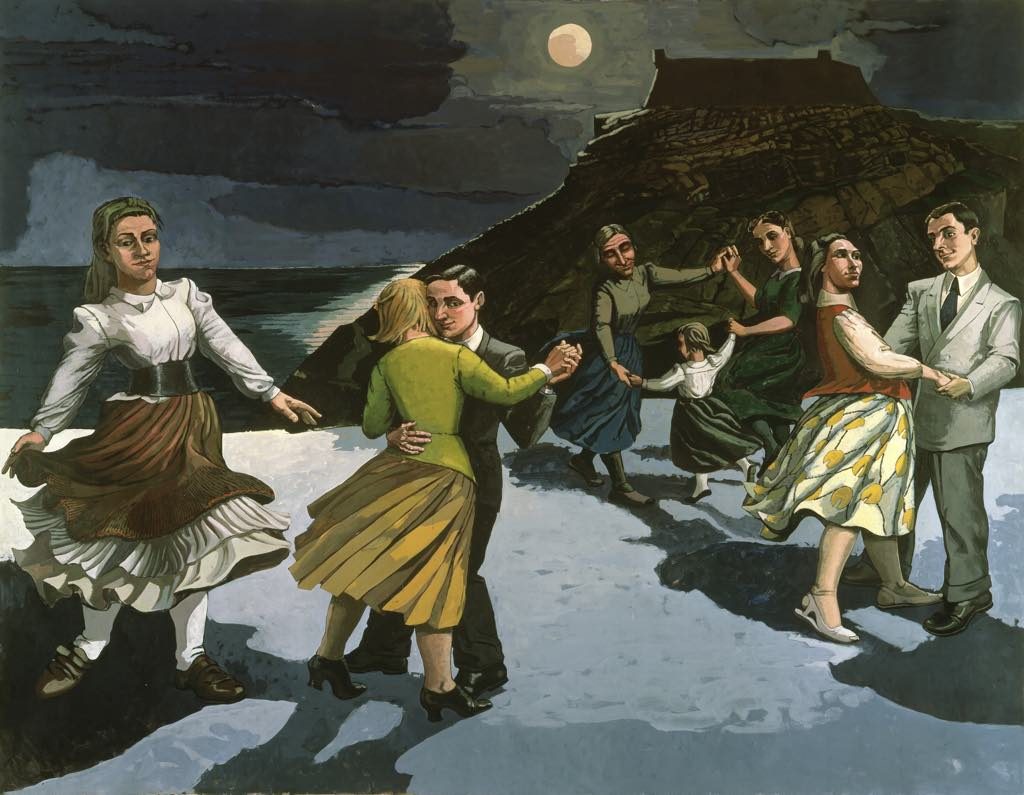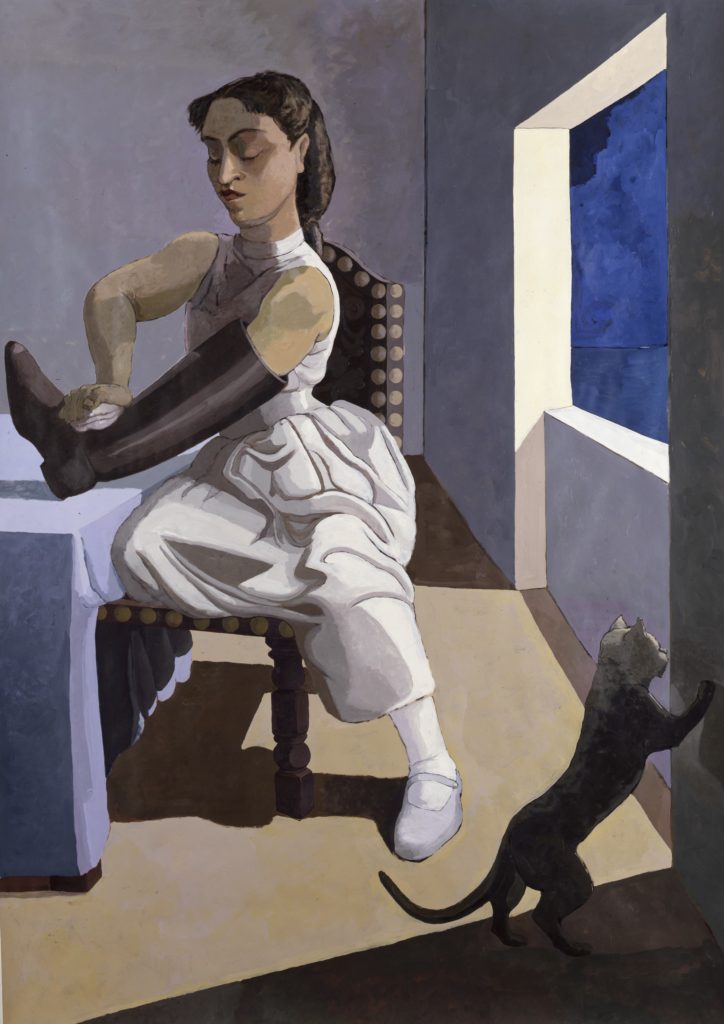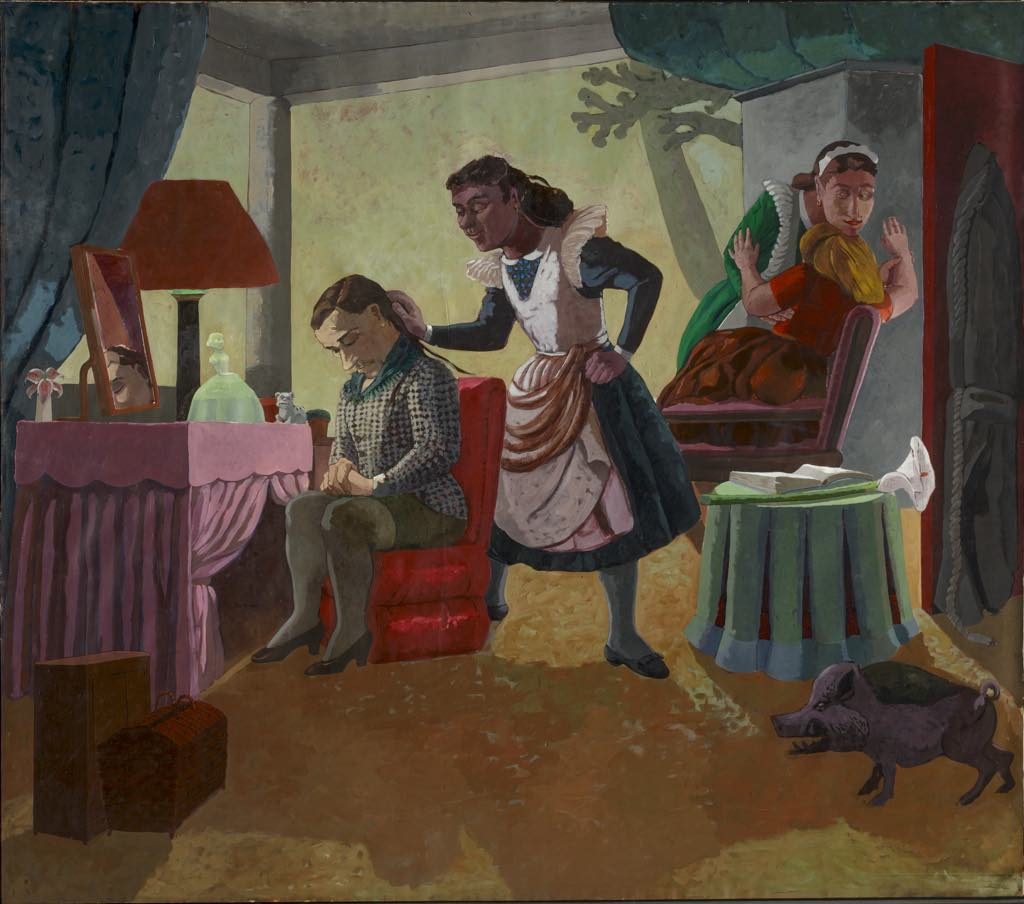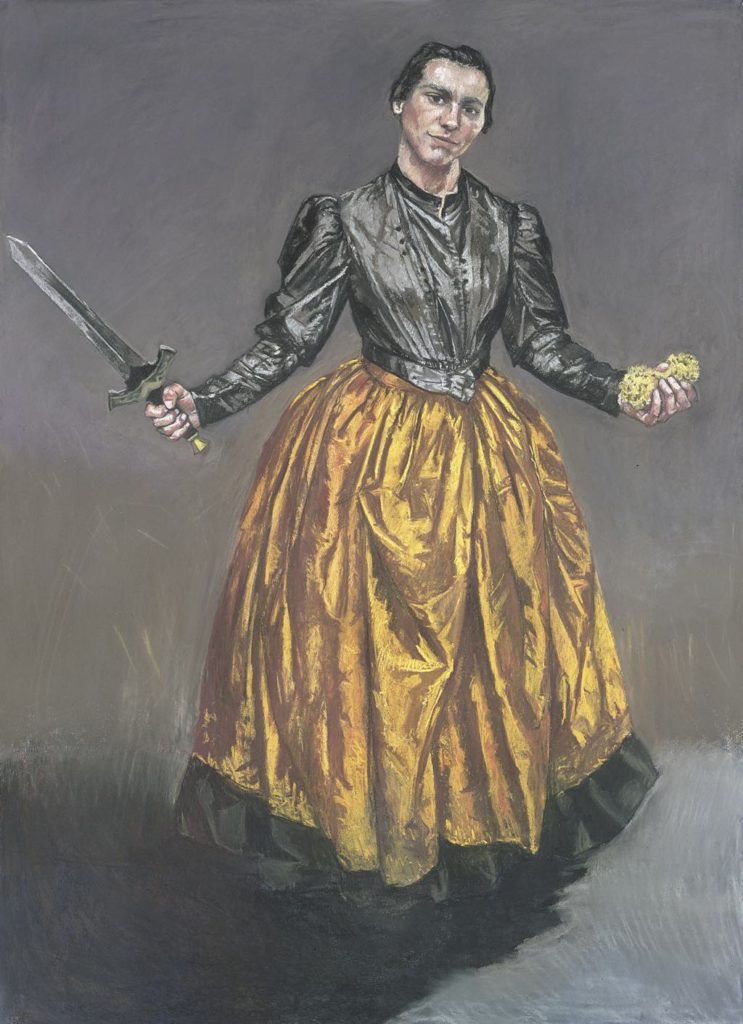The first time I saw Paula Rego’s storytelling paintings at the Tate Britain in London, I was fascinated by their almost perverse weirdness. Finally, a Paris museum, the Musée de l’Orangerie, has turned its attention to this unique artist with the exhibition “The Cruel Stories of Paula Rego.”
Rego was born in Portugal in 1935 and absorbed the local folklore that informs much of her work from her grandmother, but she has lived most of her life in England. Her career began in the 1960s, when she was a member of The London Group along with such contemporaries as David Hockney and Frank Auerbach. Like them, she resisted the dominance of abstraction at the time (after some early experimentation) and is a staunchly figurative painter.
The twisted storybook subjects of Rego’s paintings, pastels and prints, with their fascination with cruelty and the grotesque, reminded me of the paintings of French artist Gérard Garouste, who treats similar themes. Rego’s imagination is fueled not only by her memories of Portuguese folk tales but also by her study of the illustrations of such artists as Arthur Rackham and Maxfield Parrish, by her own Jungian analysis and by the writings of (now-discredited) child psychologist and fairytale analyst Bruno Bettelheim.
In their psychological depth and focus on women, Rego’s works also made me think of Louise Bourgeois, some of whose works are included in the show, along with others by artists who also influenced Rego, including Francisco Goya, Honoré Daumier, Édouard Manet and Odilon Redon.
The exhibition, with around 60 works, follows her career from the 1980s to the present. The looming female figures who dominate her works are depicted ambiguously as both victims and cruel perpetrators. The girl in “The Little Murderess” (1987) is about to strangle an unseen figure, while the one in the sinister, almost cartoon-like “The Policeman’s Daughter,” from the same year, sits in the moonlight from an open window assiduously polishing her father’s black boot, while a black cat lurks in the shadows.
In the ambiguous “The Maids” (1987), inspired by Jean Genet’s play, the servants seem to be carrying out their fantasy of killing their mistress, who looks like a man dressed in women’s clothing (the female characters in Genet’s play were first played by men).
The exhibition also includes some of the strange mannequins the artist has created to serve as studio models, among them “The Pillowman” (inspired by the play by Martin McDonagh), a frighteningly grotesque character who appears in several paintings from 2004 and ’05 as a figure that is at once comforting and menacing (much like Bourgeois’s depiction of her mother as a frightening yet protective spider).
Other series from the 2000s feature women (all of them with decidedly masculine facial features and bodies) as “heroines” (one example: the woman in the 1998 pastel “Angel,” who brandishes a sword while smiling Mona Lisa-style); as muscle-bound dancers; or as dogs, often poised to attack, as in “Dog Woman” (1994), in which the snarling subject crouches submissively yet looks ready to attack.
This is a rare chance to see in France the work of this noteworthy artist, of whom the feminist writer Germaine Greer once wrote, “No other artist has ever come close to capturing Rego’s sense of the phantasmagoria that is female reality.”
Favorite



